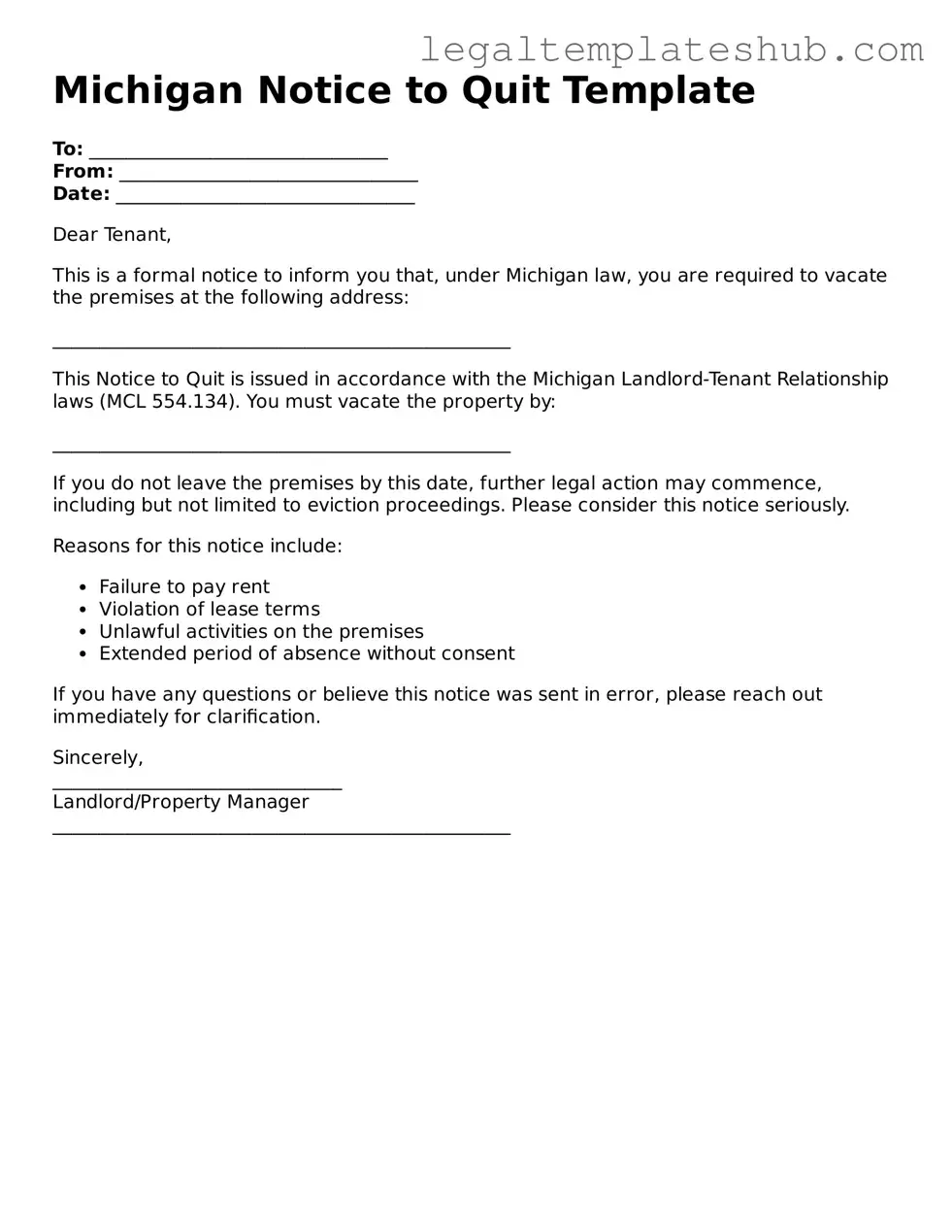Printable Notice to Quit Document for Michigan
The Michigan Notice to Quit form is a legal document that a landlord uses to inform a tenant that they must vacate the rental property. This notice typically outlines the reasons for eviction and provides a specific timeframe for the tenant to leave. Understanding this form is essential for both landlords and tenants to ensure compliance with state laws and protect their rights.
For more information and to fill out the form, click the button below.
Access Editor
